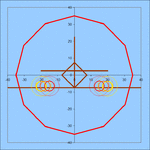Glider
Captain
The Beaufighter lacks the destructive armament of other fighters though.
The Me-262 has the heaviest fighter armament featuring 4x 30mm cannons, while the Fw-190A-8/A-9 comes in as a close 2nd with 2x 13mm, 2x 20mm 2x 30mm cannons.
Just an idea, what about salvoing the rockets at a bomber box, that might well cause a problem or two and there can be little doubt what would happen if one hit.





